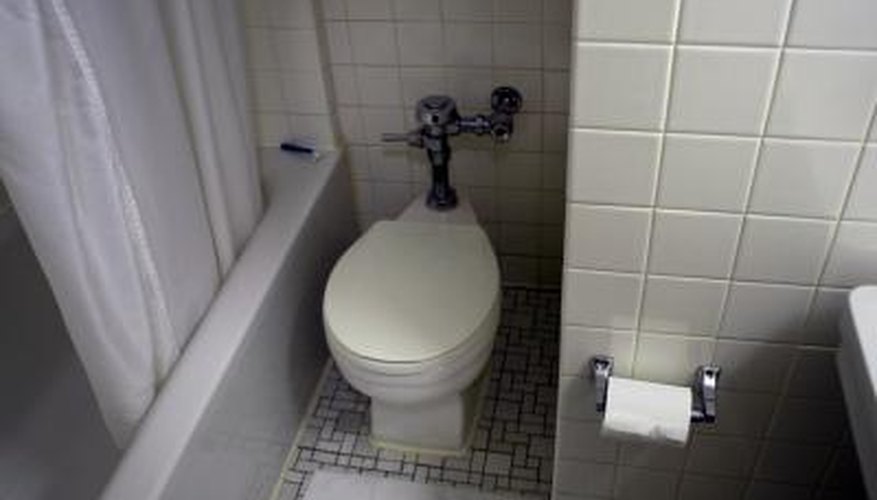Modern toilets come with a variety of features, such as cushioned seats, bidet jets and pressure- or vacuum-assisted flushing mechanisms. Despite these options, most manufacturers adhere to a strict set of dimensions when constructing toilets. This is why toilets generally are the same size regardless of which home, business or public rest room you happen to use. There are, however, slight variations in toilet dimensions worth noting.
Seat Width
A toilet's standard seat width is 40 centimetres or 15.7 inches. This measurement includes the rim of the seat, which is 5 centimetres or about 2 inches wide on either side. When you subtract the width of the rim from the width of the overall seat, you get the "effective" width of the bowl, which refers to the width of the bowl when the seat is down and ready for use. Based on the above measurements, the effective width of a standard toilet bowl is 30 centimetres or 11.8 inches.
- A toilet's standard seat width is 40 centimetres or 15.7 inches.
- This measurement includes the rim of the seat, which is 5 centimetres or about 2 inches wide on either side.
Seat Length
Unlike toilet seat widths, toilet seat lengths can range from 45 centimetres or 17.7 inches to 50 centimetres or 19.7 inches. Toilet seats with 17.7-inch lengths are standard seats. Longer varieties are known as elongated seats. As with seat width, you must take into account the size of the seat rim to get an effective bowl length measurement. A 17.7-inch-long toilet seat has an effective bowl length of 35 centimetres or 13.8 inches. A 19.7-inch-long seat has an effective length of 40 centimetres or 15.7 inches. Elongated seats tend to provide more comfort and because of the larger openings can more easily collect waste matter. Toilets with shorter seats can help save space in a cramped bathroom.
- Unlike toilet seat widths, toilet seat lengths can range from 45 centimetres or 17.7 inches to 50 centimetres or 19.7 inches.
- Toilet seats with 17.7-inch lengths are standard seats.
Seat Height
The seat height refers to how far the toilet's seat rests above the floor. The normal range is 40 to 45 centimetres or 15.7 to 17.7 inches. When seat height exceeds these standards, toilets might put pressure on the backs of the thighs and cause leg numbness. Seat heights that are too low can be uncomfortable and potentially contribute to constipation.
- The seat height refers to how far the toilet's seat rests above the floor.
- When seat height exceeds these standards, toilets might put pressure on the backs of the thighs and cause leg numbness.
Water Tank Size
The water tank at the back of a toilet usually is the same width as -- or just a bit wider than -- the toilet seat's overall width. The length of the water tank, measuring from its back to its front, typically is 25 centimetres or 9.8 inches. When adding the length of the toilet's water tank to the overall length of the toilet's seat, you end up with the total length of the toilet. This usually ranges form 70 to 75 centimetres or 27.6 to 29.5 inches.
- The water tank at the back of a toilet usually is the same width as -- or just a bit wider than -- the toilet seat's overall width.
- The length of the water tank, measuring from its back to its front, typically is 25 centimetres or 9.8 inches.
